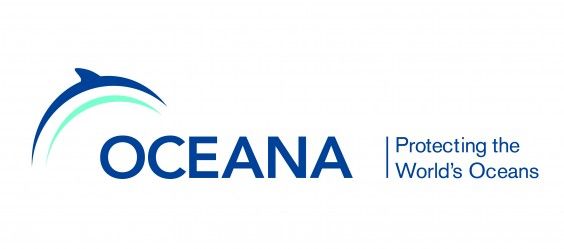Greatist is pleased to announce a new content partnership with Oceana, the world’s largest advocacy group dedicated to ocean conservation. Throughout the coming months, we’ll be publishing occasional pieces from Oceana researchers and scientists on seafood safety and sustainability.
This piece comes from Dr. Kimberly Warner, a senior scientist at Oceana. The views expressed herein are hers. To learn more about Oceana, visit their website.
Photo courtesy of Oceana
When I dive into a tasty seafood meal, it’s because I’m choosing a protein low in certain fats, contaminants, and calories, but swimming in the good stuff, like essential fatty acids. I also want to know that the type of seafood I enjoy on a given day came from a healthy population of marine life and had a good chance of being available for the next generation. But these days, choosing the best seafood for your health or the health of the oceans can be a tricky road to navigate, especially if you can’t trust that the fish you ordered is the fish you’re being served.
Seafood Labeling Fraud — Why It Matters
Last February, Oceana uncovered rampant mislabeling in one of the largest seafood fraud studies ever conducted. Using DNA testing, our team discovered that one-third of 1,215 samples of 46 different types of fish collected between 2010 and 2012 were mislabeled according to U.S. Food and Drug Administration (FDA) guidelines. This type of fraud occurs when the species sold to unsuspecting consumers is swapped for a less expensive or generally less desirable species. Seafood fraud hurts not only your wallet, but potentially your health, as well as the health of our oceans.
When seafood species are swapped, consumers trying to make better dietary choices may be duped into buying products that are potentially harmful to their health. In our studies, Oceana has found substitutions for species with health advisories that warn against their consumption. For example, escolar, a snake mackerel species the FDA warns against eating due to a naturally occurring toxin, was swapped for white tuna in 84 percent of cases tested. Four fish species are on the FDA’s “Do Not Eat” list for pregnant women and children because of high mercury content, and Oceana found two of these fish swapped in for more popular, lower-mercury types. This occurred in South Florida — where king mackerel replaced grouper — and in New York City, where tilefish was sold as red snapper in local grocery stores.
Our seafood choices greatly shape the future health of our oceans. This Saturday, June 8, is World Oceans Day — a day to honor the oceans for what they give us as well as explore ways to further protect one of the world’s most precious and essential habitats. In addition to public health concerns, seafood fraud harms our oceans when vulnerable and overfished species are used to substitute more sustainable options. In our study, Oceana found instances where the depleted Atlantic halibut was sold as the better-managed Pacific halibut, and vulnerable speckled hind was sold as red grouper. Fraud like this undermines responsible fishing practices and goes beyond harming just consumers.
How to Make Safe, Ethical Seafood Purchases
Seafood fraud can make purchasing decisions harder for conscientious consumers, but there are ways to protect yourself from fraudulent fish and protect your wallet, health, and the oceans.
- Ask questions. Learn more about your seafood by asking restaurants and retail owners about the origin of the seafood they carry, including where, when, and how it was caught and whether it was farmed or wild.
- Buy whole fish. Purchase the entire fish if possible, and ask the store to fillet it for you. When fish is already filleted, it’s much harder to tell if you are being sold the actual product you asked for.
- Check the price. A good deal might simply be a good scam. When a price is surprisingly low, the labeling might be fraudulent because a less expensive fish has been swapped in.
- Your wallet speaks volumes. Ask for and buy sustainable and traceable seafood from vendors that participate in traceability programs. This lets retailers and suppliers know that consumers want to know exactly where their food came from.
- Pay extra attention to risky fish. Species like snapper, “white tuna,” halibut, sea bass, and grouper are among the most commonly swapped in seafood scams, so pay extra attention to information retailers give when asking about them.
Until we have a comprehensive traceability program for our nation’s seafood supply, this type of fraud will continue to happen — and that’s unfortunate. Until then, consumers should keep asking questions and asking for traceable seafood. Everyone who tries to make informed choices about the food they eat deserves to know that their seafood is safe, legal, and honestly labeled.

